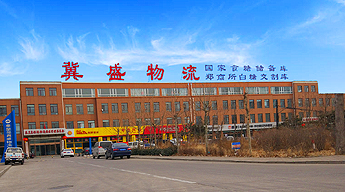The IRS proposes to cut taxes and reduce the burden on the transport industry to benefit from tax cuts.
Date:11, 20, 2018Hits:2
The State Administration of Taxation said this week that it should put forward policy proposals as soon as possible that reflect the requirements of larger-scale, substantive and inclusive tax reduction, especially the proposals of promoting substantive tax reduction such as VAT. Since May 1 this year, the VAT tax rate of manufacturing and other industries has dropped from 17% to 16%, and the VAT tax rate of transportation, construction, basic telecommunications services and agricultural products has dropped from 11% to 10%.
What impact will the further reduction of VAT have on the various sub-industries of transportation? We believe that: 1. VAT itself is an extra-price tax, which does not affect the profit statement except for the additional urban construction and education fees on which it is based; but for the C-terminal business, such as air passenger ticket, railway passenger train ticket, shipping passenger ship ticket, etc. The reduction of VAT will have a beneficial effect on the income side, deducting the change of the cost side, or bring about the increase of profits. 2. The current VAT rate is 16%, 10% and 6%. If the "three-in-two" tax rate is further introduced, there will be more adjustable space for the 16% and 10% tax rates. At present, the 10% tax rate applied in sub-industry business mainly includes domestic air transport, railway transport, road freight transportation, etc. It is applicable to 6% of the main organic airports and express delivery. Highway is usually reduced by 3% levy rate. In addition, the zero tax rate is applied to international and ocean transportation business. Therefore, aviation and railways will be the two industries with larger tax reduction space.
Aviation: 10% VAT rate is applicable for domestic transport business, 16% for aircraft supply sales, 6% for ground, logistics, etc. It is estimated that the three major airlines can increase their profits by 260 million to 300 million yuan, equivalent to 4% to 5.5% of their profits in 2017, and the two airlines, Chunqiu and Jixiang, can increase their profits by 227 million yuan and 445 million yuan, respectively, equivalent to 21% and 34% of their profits in 2017. If the VAT rate is reduced from 10% to 6%, it is expected to increase profits by 1.2 billion yuan, 1 billion yuan and 1.3 billion yuan for China Airlines, China Eastern Airlines and China Southern Airlines respectively; auspicious Airlines will increase profits by 180 million yuan, and Spring and Autumn Airlines will increase profits by 110 million yuan.
Railway: the value added tax rate is 10% for railway transportation, and 6% for auxiliary income. 1. At the freight terminal, after lowering the VAT rate, the total railway will adjust the freight rate accordingly, which will affect neutrality and help to release the price advantage of railway transportation and further stimulate the road-to-railway transition. 2. At the passenger terminal, the reduction of tax rate will benefit the Guangzhou-Shenzhen Railway, with a reduction of 1% or an increase of 333 million yuan in profits. If the VAT rate is reduced from 10% to 6%, it is expected that the profits of the Datong-Qinhuangdao Railway and the Guangzhou-Shenzhen Railway will be increased by 130 million yuan and 170 million yuan respectively.
Express: express and warehousing business applies to 6% VAT, road freight 10%. From the perspective of tax reduction space, Germany will benefit most from heavy cargo business, with a profit of 0.4 billion yuan per 1% reduction or increase.
Airport: tax reduction has little impact. In aviation business, the value-added tax rate of 6% shall be applied to the income of domestic aviation enterprises, while the zero tax rate shall be applied to the income of overseas aviation enterprises. 6% tax rates apply to non tax revenue, duty free shops, shops and advertising. Airport company cost-side depreciation and labor account for more than 50%, only maintenance and hydropower can be deducted, adjustment space is limited.
Transformation: logistics and purchasing network


